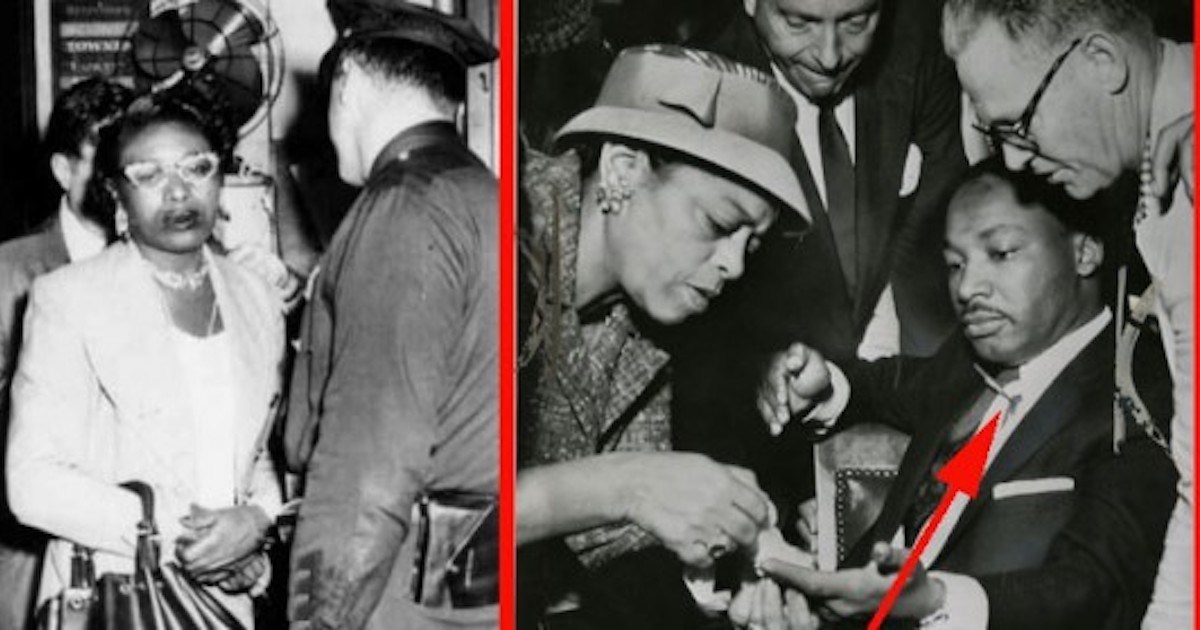[ad_1]
On the afternoon of Sept. 20, 1958, the Rev. Martin Luther King Jr. was autographing books in the shoe section of Blumstein’s Department Store in Harlem when a well-dressed woman wearing rhinestone glasses stepped out of the long line and shouted: “Is this Martin Luther King?”
King looked up from signing copies of his first book, “Stride Toward Freedom: The Montgomery Story,” his memoir about the Montgomery, Ala., bus boycott.
The year-long boycott had led to a Supreme Court ruling that racial segregation on public buses was unconstitutional. And King, its leader was rising in national and international prominence.
King, then 29, answered: “Yes, it is.”
That’s when Izola Ware Curry, the black daughter of sharecroppers, pulled a letter opener with an ivory handle from her purse and swung at King. The civil rights leader tried to block the attack. Curry sliced King’s hand before plunging a seven-inch blade into the left side of King’s chest, according to the Martin Luther King, Jr. Research and Education Institute at Stanford University.
[ad_2]
Source link

